The Little Nation That Can: Iceland's Underdogs Take on the World Cup Stage

For an in-depth and up-close look at Iceland's unique soccer culture and vast landscape, watch SI TV's new, exclusive mini-doc, Exploring Planet Fútbol: Iceland. Sign up here for a FREE seven-day trial to watch the film.
Seven years ago, when he put his dentistry career to the side and became a coach for Iceland, Heimir Hallgrímsson began a tradition that continues to this day. Two hours before every men’s national team home game, Hallgrímsson (who’s now the head coach) arrives at Ölver, a popular soccer bar near Laugardalsvöllur national stadium in Reykjavík. He climbs a wooden stage in front of the members of Tólfan—the 12th Man, Iceland’s raucous supporters group—and asks for the doors to be locked, with no media allowed, nor any sharing of photos, video or information on social media.
Then he attaches his laptop to a video projector and proceeds to do something that would be unimaginable with any other national team coach on the planet, much less one whose team has reached the World Cup for the first time and will meet Lionel Messi’s Argentina in its first game on June 16: He tells the fans which 11 players will be in his starting lineup, which formation he will use and all the secret details of his gameplan. Árni Thór Gunnarsson, a Tólfan member who travels to home and away games, says his favorite part is when Hallgrímsson shows the fans his motivational hype video, the same one the players see, which sends everyone into a drum-beating, chant-singing paroxysm of pure Viking energy.
Watch: Iceland Announces Squad for World Cup with Epic Hype Video
When Heimir—pronounced HEY-mir; everyone’s on a first-name basis in Iceland—began his pregame chalk talks in 2012, a time when Iceland was ranked No. 104 in the world, only seven fans showed up. These days, with Iceland at No. 22 and coming off a magical Euro 2016 quarterfinal run that included eliminating England, as many as 700 squeeze into the room. Never has the trust been violated.
“For seven years I’ve done it now, and nothing—I repeat, nothing—has leaked on social media, even though the information they are getting is quite huge and is probably sellable,” Heimir says. “It wouldn’t be possible unless it’s a community that trusts each other like here.”
It’s also a savvy move. If Iceland gets a bad result—a rare occurrence these days—then at least the fans can judge the pregame strategy as opposed to just playing Monday morning center back.
“I think you gain respect and trust by being open and honest,” Heimir says. “We always say to the supporters how we are planning to play. When you do that, you’re judged just on what you’re trying to achieve. It’s the same with the media here. We like to be really honest with the media. Then you get criticized for the right reasons.”
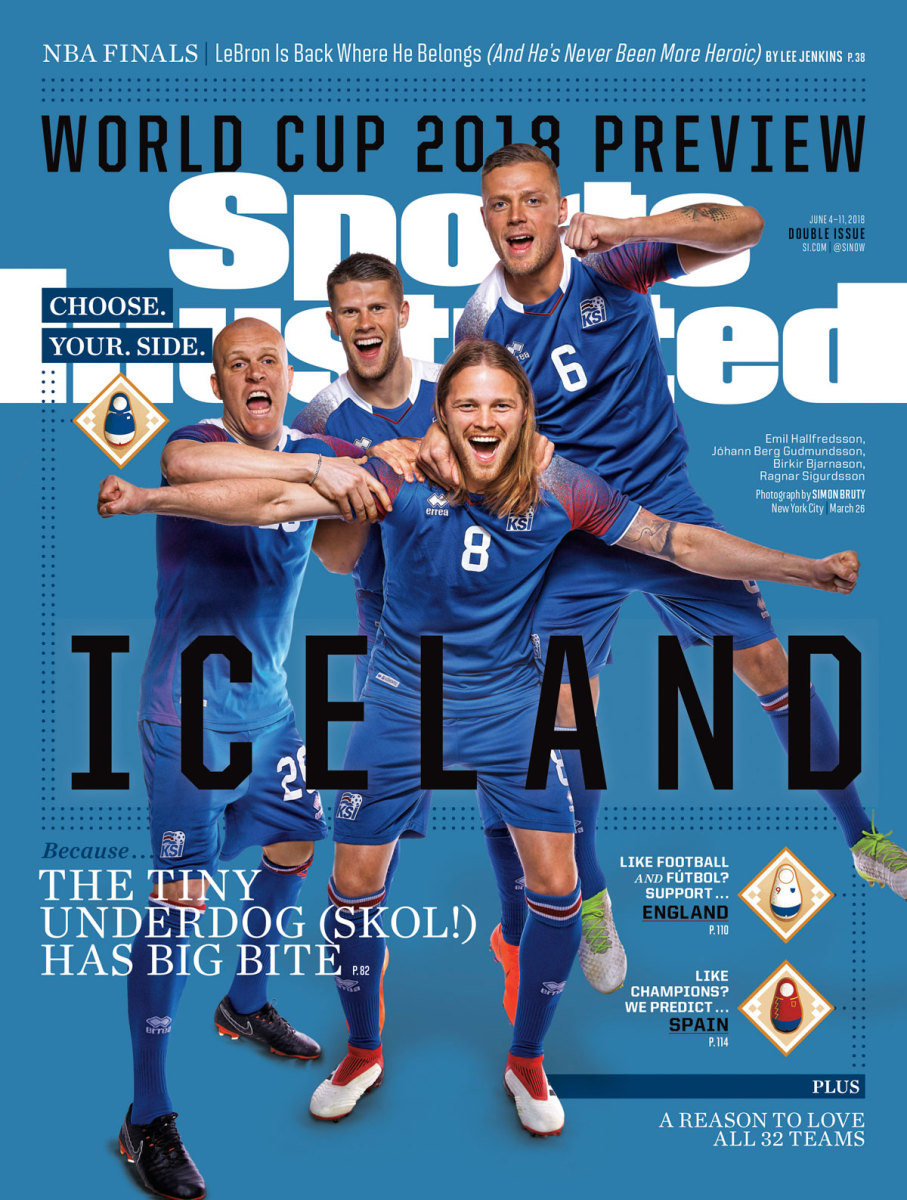
Wearing a stylish long-tailed navy coat, Heimir, 50, has blond eyebrows that dance when he smiles—and, it should be noted, immaculate teeth. He hails from Vestmannaeyjar, a town of 5,000 on a windswept volcanic island a ferry ride from Iceland’s southern coast.
Everyone on the island knows Heimir and his story; the fry cook at your lunch place is liable to tell you that he was his dentist and youth soccer coach just a few years ago. A former amateur player, Heimir also coached the youth (17 years), women’s (five years) and men’s teams (five years) at ÍBV, his local club, which may have the most picturesque stadium location—next to a massive jagged rock formation—of any team in the world. Heimir still keeps the office in town from his previous occupation.
“I just do it now and again to keep my fingers and brain working in dentistry,” he says with a laugh. “It’s good to take time off football for some time and do something different. Some coaches play golf. I do dentistry.”
With a population of just under 350,000, about the size of metropolitan Peoria, Iceland is the smallest nation ever to qualify for the men’s World Cup. In one of the globe’s toughest confederations, UEFA, it won a brutally difficult qualifying group that also included European rivals Croatia, Turkey and Ukraine. Meanwhile, the United States failed to qualify as a country of 325 million from one of the world’s easiest regions. There are many reasons for Iceland’s rise, but one of the most common explanations you hear from the authors of that success is the virtue of smallness.
“We have great strength in how few we are,” says Arnar Bill Gunnarsson, the technical director for the Iceland federation. “It’s easy to organize the game. The culture is really good. Because we are so few, we treat everyone very well. For example, kids at the age of 10, they would have—both boys and girls—three training sessions a week on an artificial pitch with a qualified coach, and everyone gets the same service.”
Adds Heimir, “We try to use it to our benefit, our size. One thing is our youth development. It’s easy to implement changes around a small country. The connection between the coaches is quite good. When a new thing comes, it quickly spreads around. You know this guy is doing it, this girl is doing it, so I’m going to do that too. We kind of push each other step by step. It’s easy when you have close connection lines between people. You know the supporters, some of them personally. Maybe you’re related to them. And they know each other. Of course, it has its disadvantages to have small numbers of people, but you can use so many things to your benefit, and you should always try to use your strengths.”
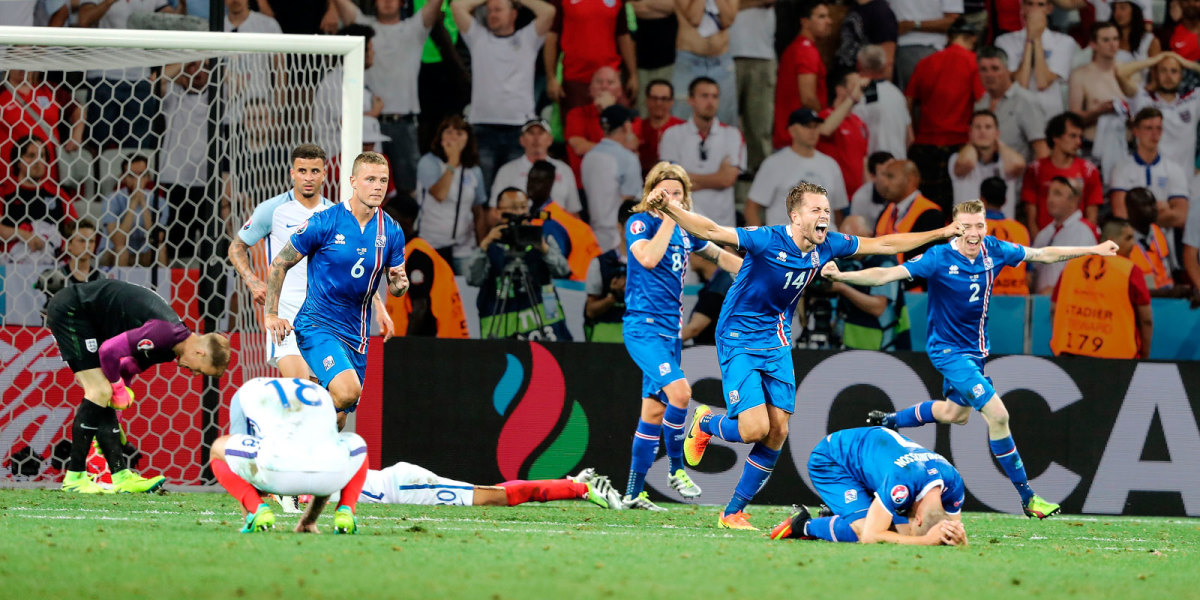
Thóra Arnórsdóttir, a television personality on the Icelandic national broadcasting service (RÚV), is a bit like the Barbara Walters of Iceland. Except that Arnórsdóttir ran for president in 2012 (she finished second), is raising three children and still plays rec soccer twice a week (“holy time” she calls it) after competing in the sport at the elite club level as a teenager. When asked what the success of Icelandic soccer has meant culturally to the country, Arnórsdóttir describes a phenomenon that’s far bigger, at least in relative terms, than the Super Bowl is in the United States.
“I don’t think someone that comes from a big country can ever understand the significance of it,” she says. “It’s huge. Enormous. Icelanders—our character is that we have this mixture of megalomania and minority complex, because we are so small and so few, but we say it’s a question of quality, not quantity. When we actually succeed in something like that, it unifies the whole nation. When we beat England, it was an out-of-body experience for a huge part of the country. When they came back from the Euro—you should see the pictures. It was a beautiful summer day. I believe most of the nation was there doing the Viking Clap.”
The Viking Clap may be the most breathtaking, eerie chant in global sports, a ritual that combines cool visuals (players and thousands of fans clapping their outstretched hands in unison) and thumping audio (a double drumbeat and the sound of HOOH! when hands meet). It may seem like a decades-old tradition, but it isn’t.
“The first time we did it was at the [2016] Euros, to be fair,” says winger Jóhann Gudmundsson. “It’s nice to have something, a bond with the fans and something special that the whole world seems to know. It’s part of our identity.”
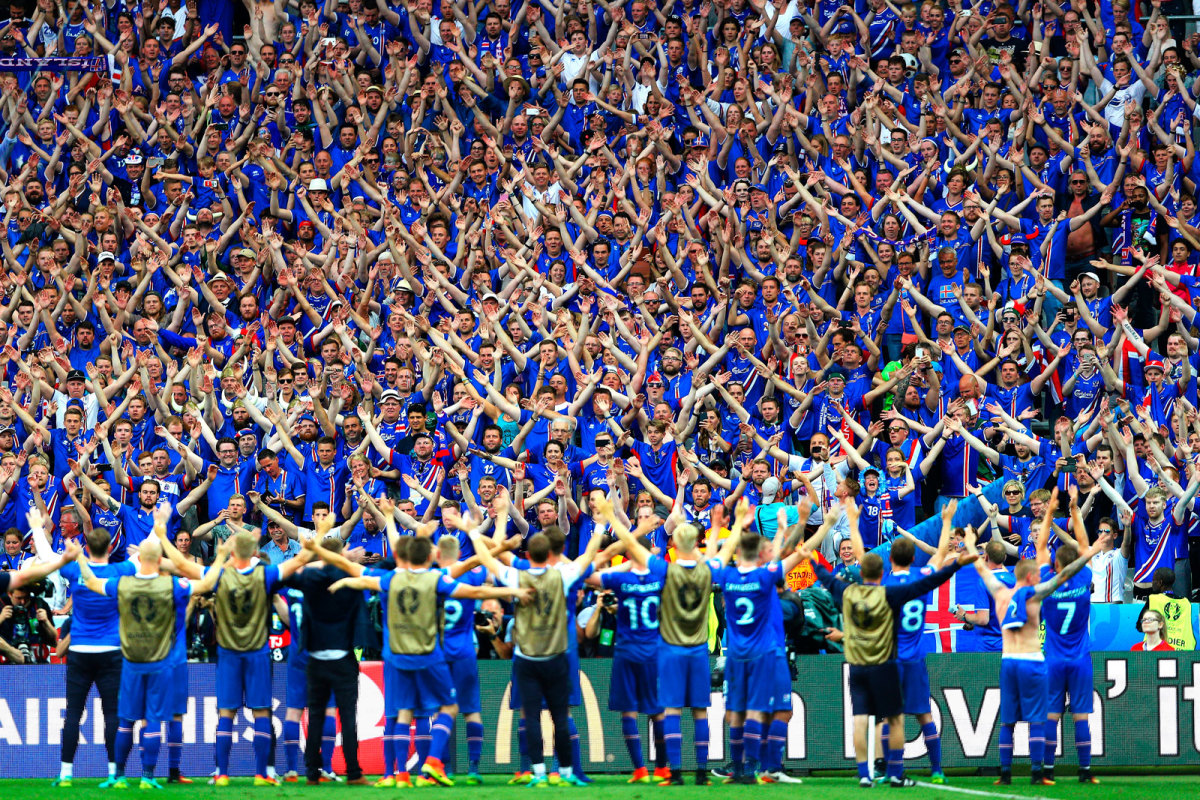
In terms of Iceland’s playing identity, Heimir says he preaches to his players that he wants to be the best in Europe in six areas out of 10 “instead of being semi-good in 10 out of 10.” Heimir asks the team to be the most organized, the best defending, the best on set pieces and the team with the most spirit.
“Even though we have less ball possession, we’re not bothered about that,” he adds. “Even though we have fewer successive passes than the opponent, we’re not bothered about that. We focus on what we would like to be the best in, and that is kind of our identity.”
That’s not to say Iceland is without skill. The team’s best player, midfielder Gylfi Sigurdsson, who’s an injury concern heading into the World Cup, was bought by Everton from Swansea City last summer for £45 million ($58 million). But even if Sigurdsson’s knee keeps him out, Iceland will still be dangerous.
“It’s really hard to break us down, and then we have the quality going forward,” says forward Birkir Bjarnason. “We can keep the ball, we score goals, we rarely concede goals.”
After Remarkable Rise, Mohamed Salah Shoulders Egypt's World Cup Hopes
Gudmundsson argues that Iceland can play in different styles depending on the opponent.
“We know that sometimes we’ve got to kick it long and fight for the second ball against good teams that keep the ball and press you really well,” he says. “Against teams where we believe we can keep the ball, we do that as well. We’ve got this good, mixed style of play.”
What’s more, Iceland’s success has been repeatable and not just a one-off. After reaching the World Cup qualifying playoff in 2013 (and losing to Croatia), Iceland had a run of positive results to qualify for the Euro for the first time. Then it reached new heights in France and again in qualifying for Russia 2018, this time with Heimir as the sole head coach after the departure of co-head coach Lars Lagerbäck, a Swede.
“This was one of the most pleasing things, that the Euros wasn’t a fluke,” says Arnar Bill. “For me, that’s a really big thing. It shows how good the team is and how the organization is good. Hopefully we can continue doing things like that.”
How did Iceland get so good? Through a combination of factors that include both infrastructure investment and changes to the senior national team itself:
• Facilities. If you drive around Iceland, it’s impossible to miss the giant publicly funded sports structures—indoor halls, they’re called—that have sprouted up like mushrooms in the tundra. Some of them, like the one in Akureyri (pop. 18,800, making it Iceland’s fourth-largest city), have full-size soccer fields for the local club and community. (It’s not uncommon to see senior citizens there in mall-walking mode.) The country’s first indoor hall was built 18 years ago; now there are 13.
“Facilities are obviously very important for us,” says Arnar Bill, the technical director. “Football actually became a whole-year sport just in the year 2000. Then, we didn’t play in the winter because we didn’t have the facilities.”
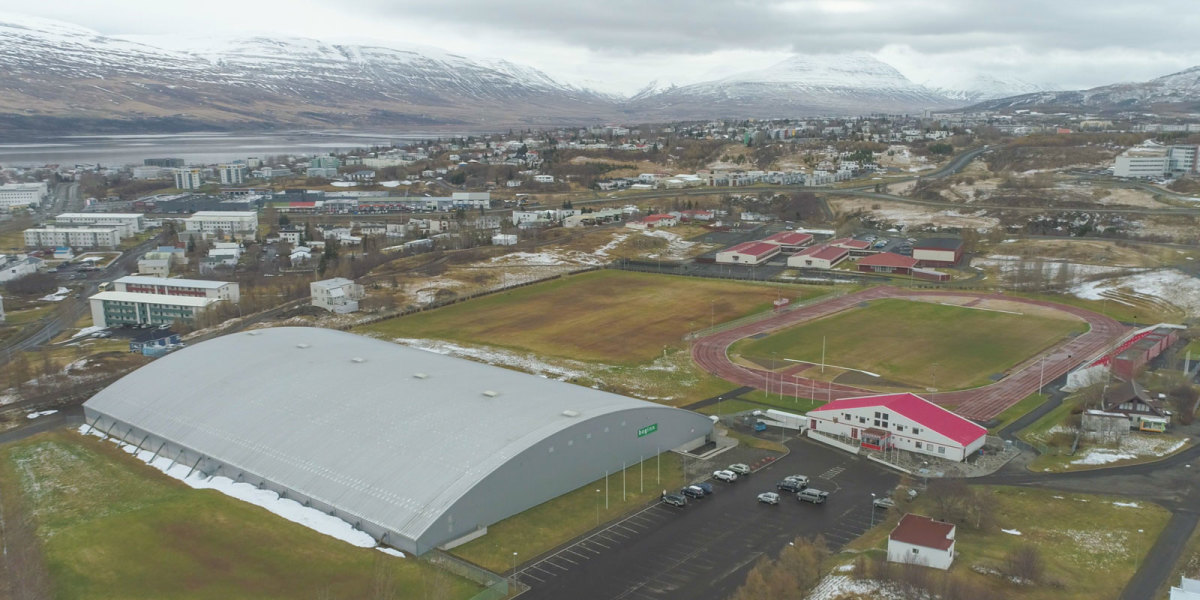
• Funding. In the U.S.’s multibillion-dollar youth sports business, one of the biggest problems is the pay-to-play system that prices out large numbers of potential soccer players, many of them minorities. Iceland has the benefit of a high standard of living, plus sports is seen as a public good that helps keep kids from getting involved in alcohol, tobacco or drugs. As Arnar Bill notes, municipalities build the indoor halls and own them, but then they give them to the local clubs. If the clubs don’t have to pay for the facilities, then the charges aren’t passed on to families.
“This is different than most of the other Scandinavian countries, where most of the clubs have difficulties just to run their facilities,” Arnar Bill says. “And the municipalities pay a part of the fee that the kids have to pay to the clubs. Let’s say it costs about $500 a year to play football in Iceland. The municipalities will pay $200 and the parents will pay $300, so they really encourage the parents to send their kids to sports.”
• Coaching. In the U.S., soccer and other youth sports are often coached by volunteer parents who know little about what they’re doing. That’s not the case in Iceland, which has seen its numbers of coaches who have become licensed—a process that takes at least a year—skyrocket since 2000. As Heimir says, “it doesn’t matter if you come from a small community in the Westfjords. You have a UEFA A or UEFA B license coach who is taking care of your kids.” All the coaches in Iceland are paid professionals. There are no volunteers, including parents.
Arnar Bill, who supervises coaching for the entire country, says, “My son, who is 5 and has just started playing football, goes to his first training session, and it’s really organized. It’s fun. He learns the discipline and how to behave in a session, and he loves the game. When you love the game, you go outside and play football outside of the organized training sessions, because no one becomes a really good player only training three times a week with your club. You have to be on the streets playing football.”
Still, Arnar Bill cautions, it’s important in Iceland for kids not to specialize too early. He says it’s normal for children to have three soccer practices a week, three gymnastics practices and perhaps one swimming lesson. What results is a culture that loves sports, whether it’s soccer, team handball or power-lifting.
United States of El Tri: Mexico Owns America's World Cup Spotlight
• Equality. Iceland’s soccer rise is happening on the women’s side, too. The national team won a Women’s World Cup qualifier last October on the road against Germany, the Olympic champion, and Iceland is in a position to reach its first Cup next year in France. If you visit the club Selfoss, about an hour outside Reykjavík, you’ll see the men’s and women’s first teams training next to each other at the same time. Thóra, the TV news host, says things are “not totally equal” between the genders yet, but the gap is smaller than in other countries.
“I have a girl, she’s 5 turning 6, and she started playing,” Thora says. “She’s going to have the same good trainers, the same amount of practice at the same good times as the boys. I’m not raising a second-class player because she’s a girl.”
• Professionalism. Speak to the national team players themselves, and they’ll be quick to credit Lagerbäck (who has coached Sweden and Nigeria at World Cups) for changing the culture of the team from the days when it was ranked in the 100s.
“It just started when Heimir and Lars took over,” says defender Ragnar Sigurdsson. “They had some good ideas on how to play on the pitch and how to behave off the pitch. They completely changed this team from being not that good to really good and a professional team.”
Lagerbäck, who came aboard in 2011, got the federation to start using charter flights for games in Europe. He also issued the players a code of “guiding stars” (Lagerbäck didn’t like the word rules) so they would take ownership of the team. Those have continued after Heimir, who considers Lagerbäck his mentor, took over the team on his own.
• Talent. Even with all the structural support, Iceland wouldn’t have sustained its winning form in recent years without a supremely skilled group of players.
“This is a golden generation,” says Arnar Bill. “The players still have four or five years in them, good years. After they retire, there will be other players, and football will go on. But in football there are always ups and downs. For some nations, like Germany, mainly ups. But for smaller nations, there’s going to be ups and downs, and hopefully the ups will be longer than before.”
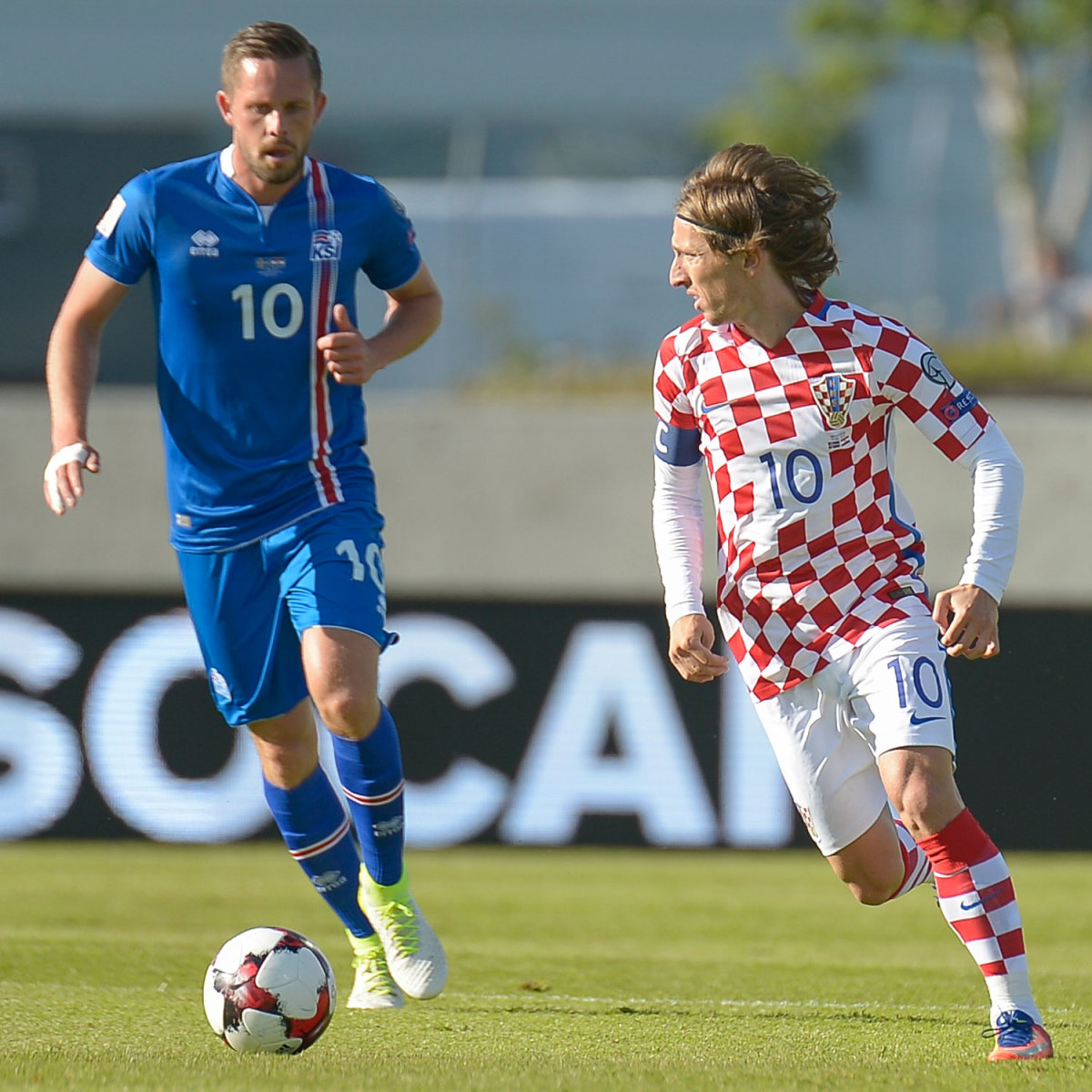
In the near term, Iceland’s World Cup group will present a monumental challenge. Argentina, a two-time world champion, has loads of talent from the top European leagues, to say nothing of Messi, the premier player of his generation. Croatia possesses one of the tournament’s top midfields, with stars Luka Modriç, Ivan Rakitiç and Ivan Perisiç. And Nigeria, an African powerhouse, has a young, emerging outfit that’s one of its best teams in years. But Heimir thinks tiny Iceland has a chance, and he’s hoping that Americans will choose to root for his team since they don’t have one in Russia.
“Definitely,” he says. “We need the numbers. All Americans like a story like this. It’s an underdog story, a Cinderella story. You go in to meet the big guns, the Argentines that normally win the World Cup, and you go in there for the first time coming from a country of 330,000 people. I think it’s an American story. Even if it’s 1% of Americans who support Iceland, that’s still more than we have, so we are open for applications for support!”
The most famous dentist in world soccer can’t help but shake his head. A few years ago he was coaching youth soccer. Two years ago his team took down England and tied the eventual champion, Portugal.
Now, the world awaits.
